Polishing your car with an automotive compound maintains its shine, makes the color pop, and keeps your car looking like new. But when you shop for polishing compounds, you’ll find that you have a myriad of options.
If you’re new to car maintenance, you might be asking yourself, “What is polishing compound, anyway? How do I use it, and does my car’s paint color affect which one I choose?” In this article, we answer all these questions and more. By the time we’re through, you’ll have everything you need to know to pick out a polishing compound and use it right away!

Search your car brand
brands

What is Polishing Compound?
As a car owner, you have access to hundreds and thousands of products to keep your car looking great. With so many options, you might feel overwhelmed at keeping track of which products does which job. So before we go any further, let’s talk about polishing compound.
Polishing compound adds shine to your vehicle. These compounds are mildly abrasive and smooth out minor imperfections in your paint job. Best for light surface scratches, polishing compounds restore the surface of your car to a like-new condition. The colors pop, the surface is smooth, and the compound delivers a stunning shine that you can achieve right at home.
Polishing compounds are one-step products. You simply wipe on, wipe off, and the job is done. You don’t need multiple staging compounds to achieve the smoothness and shine that you get with a polishing compound. There’s no need for stripping, and it provides a durable finish that adds brilliance to your car’s paint.
Polishing Compound Vs. Rubbing Compound
When considering polishing compounds, don’t confuse them with rubbing compounds. While the two are often used in tandem, they’re different products that accomplish different goals for your vehicle.
Polishing compound does just that: it polishes and is the final step in your car paint maintenance. Rubbing compounds target uneven spots in your car’s paint due to scratches. Also called “leveling compounds,” rubbing compounds shave paint around a scratch, leaving a smooth, level surface. Rubbing compounds vary in grit and therefore come in differing degrees of abrasiveness.
When Should I Use Polishing Compound?
Now you know the difference—and similarities—between rubbing and polishing compounds. So when is the right time to use your polishing compound.
A polishing compound cleans, shines, and polishes. You shouldn’t use polishing compound daily. Apply it periodically to remove light scratches, watermarks, and even light stains or oxidation.
Polishing compounds are effective treatments for blemishes on newer vehicles. The compound gently buffs out minor imperfections in a vehicle’s topcoat. On newer cars, the topcoat is still in great condition. A polishing compound removes damage on the outermost layer of the topcoat, allowing you to restore your car to its like-new state from your own garage.
How Do You Use Polishing Compound?
Using a polishing compound is easy and straightforward. You have two options when applying your polishing compound: by hand or with a buffing machine. The strategy is the same regardless of the method you’re using.
The process we describe below is for minor scratches or routine polishing. Now, let’s get to it.
-
Wash Your Car
To begin, wash your car. This removes dirt, grime, and other impurities that could scratch your car once you apply the compound. Thoroughly clean your vehicle with an automotive soap, then dry with a microfiber cloth.
After your car is clean and before you begin using your polishing compound, make sure the surface of the car is cool. Park it in the shade or in your garage before moving forward. A hot surface can affect the makeup of the compound and alter how it reacts on your vehicle.
-
Apply the Polishing Compound
When applying the polishing compound, work in small batches. We recommend staying within a two-feet-by-two-feet space. This allows you to control the compound more effectively.
If left on a car’s surface for too long, your polishing compound will start to dry. As it dries, it’s more difficult to work with, and it isn’t as effective. But if you work in small areas, you can apply, buff, and remove the compound without the product drying or breaking down.
Once you’re ready, apply a small amount of polishing compound onto the applicator of your choice. Dampen, then apply the compound in a circular motion. Use light, even pressure, and move the applicator in all directions to ensure a smooth application and even polishing.
-
Remove Used Polishing Compound
After you’ve buffed a small area of your car, use a microfiber towel to remove the broken-down polishing compound. Evaluate your work to ensure you’ve applied level pressure and there’s an even shine from all directions.
If everything looks good, repeat the polishing process until your entire vehicle showcases a brilliant shine.
Does My Car’s Paint Color Affect the Polishing Compound I Choose?
Now that you understand what polishing compound is and how to use it, we can ask our original question: Does your car’s paint color affect the polishing compound you choose?
Yes. Your car’s color will react differently to certain car polishes. Dark cars show even the slightest scratch more easily that their lighter counterparts. You can follow that same logic when choosing polishing compounds.
Lighter-colored vehicles can accommodate more abrasive, higher-grit polishing compounds. As we stated earlier, polishing compounds are abrasive, but only enough to buff out light scratches. But even within polishing compounds, you’ll find varying levels of grit.
If you drive a darker car, opt for a less abrasive polishing compound and applicator. But if you drive a light-colored car, you can choose polishing compounds with a higher grit and not worry about swirls surfacing after you’ve polished it.
How Do I Choose the Right Polishing Compound for My Vehicle?
When shopping for car polish, you don’t want to choose a product that’s going to scratch up your topcoat. Thankfully, you have many polishing options to choose from that are safe for vehicles of all colors.
While high-end polishes can be formulated for specific paint colors and types, you also have a variety of general polishes that are safe for your car regardless of its color. If you have any questions about which polish is best for your car, you can ask your local detail shop or auto care shop for their opinions.
No matter what you decide to use, keeping your car polished is a sure-fire way to preserve its shine and its resale value. Now get out there, find a polish you like, and get to work! And when you’re done here are some tips for a sweet smelling interior!
Can’t find your color code? enter your details manually here






























































